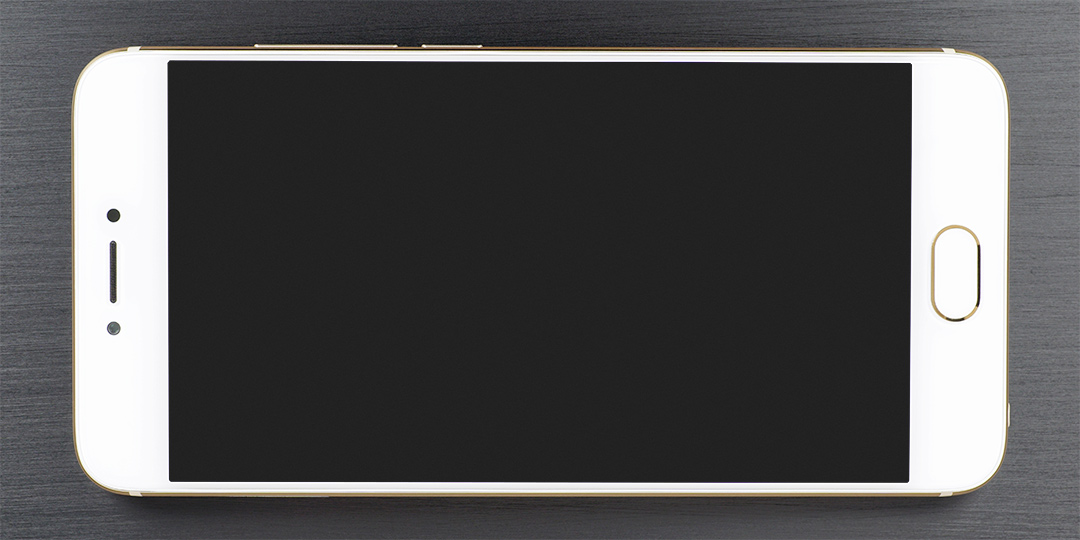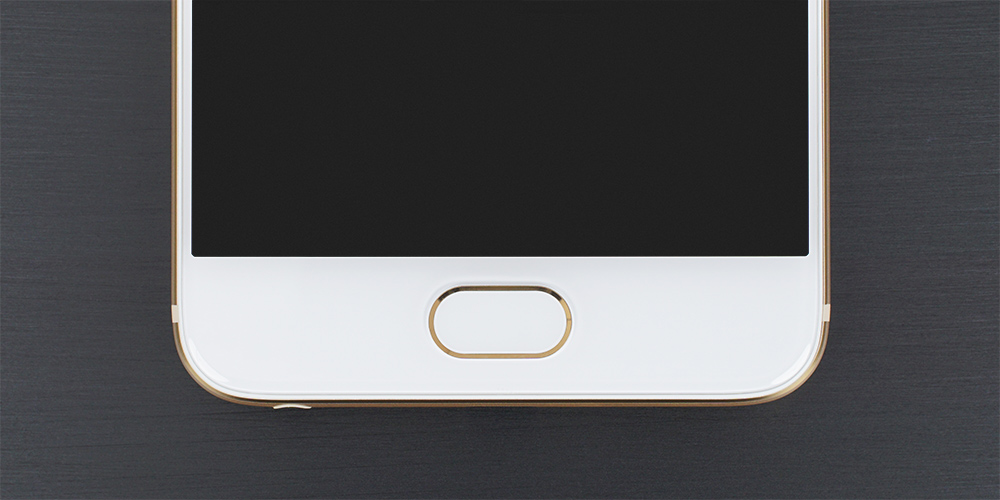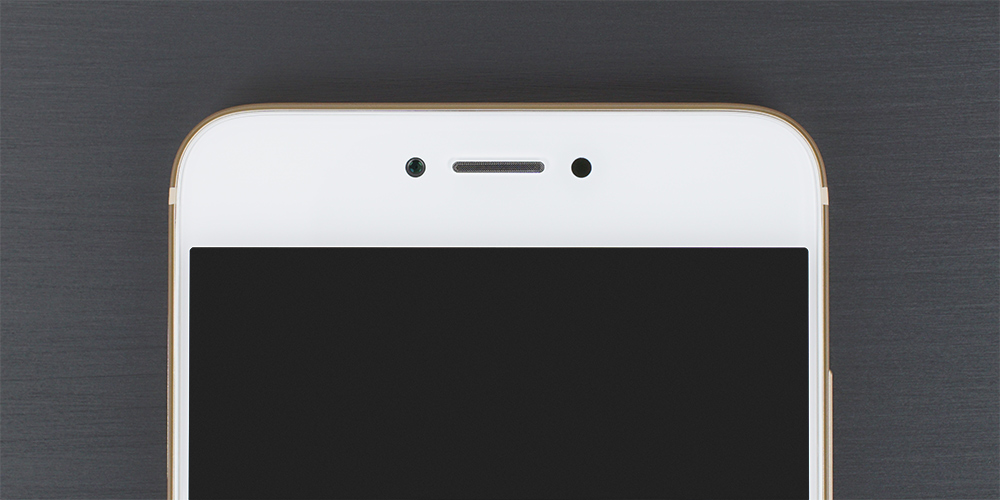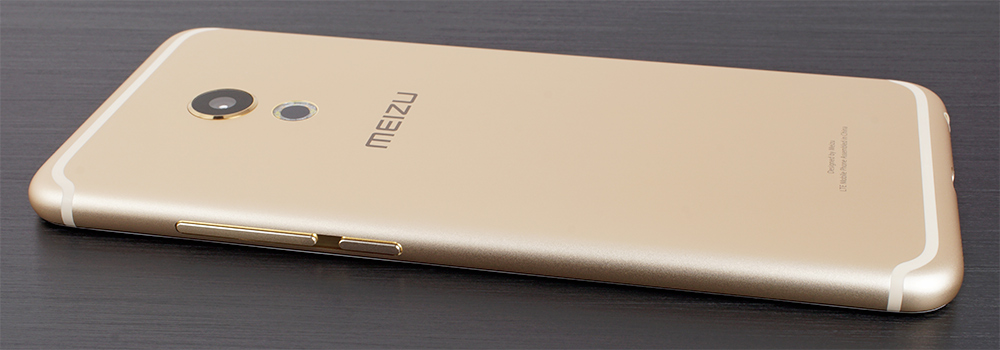The Meizu PRO 6 Review
by Matt Humrick on August 26, 2016 8:00 AM EST- Posted in
- Smartphones
- Mobile
- MediaTek
- Meizu
- PRO 6
Design
One thing Meizu admires is design consistency: All of its phones use the same materials, construction, and style. The PRO 6 continues this legacy, with an all-aluminum, sandblasted chassis whose rounded edges and corners make it comfortable, but a little slippery, to hold.
There are a few minor differences between it and Meizu’s previous generation of phones, which I’ll point out in a minute, but the biggest difference is size; Meizu has shrunk the screen of its flagship from 5.7-inches to only 5.2-inches. I would not call the PRO 6 a small phone, but it’s definitely not a phablet either, shaving 9mm and 7mm off the PRO 5’s height and width, respectively. The PRO 6 is essentially the same size as Huawei’s P9, another phone with a 5.2-inch display, and is about 5mm taller, a little more than 1mm wider, and 0.6mm thinner than Samsung’s Galaxy S7 (5.1-inch display) and Sony’s Xperia X (5.0-inch display). It seems the PRO 6’s purpose is less about replacing the PRO 5 and more about filling a size gap in Meizu’s lineup.
The front of the PRO 6 is still edge-to-edge Gorilla glass with a small radius that blends into a polished, chamfered edge on the aluminum chassis. There’s an almost nonexistent black border around the screen and the bezels, particularly on the sides, are reasonably small.
There’s a single, multi-purpose button below the screen. When pressed, it acts as a home button and makes a nice, solid click. Pressing and holding the button locks the screen. It also houses the touch-based fingerprint sensor and serves as a capacitive back button when not being used to unlock the phone or authorize purchases. The pill-shaped button is slightly recessed, which makes it easy to find without looking, and is surrounded by a polished gold or chrome accent depending on body color.
For the M3 note, Meizu focused on improving symmetry which applies to the PRO 6’s design as well. The rather small earpiece, centered above the display, is the same size as the PRO 5’s; however, the PRO 6’s narrower width makes it easier to align with the ear, making phone conversations easier to hear relative to the PRO 5. The ambient light/proximity sensor and front-facing camera are the same size and sit to the right and left of the earpiece, respectively. There’s also a white notification LED hidden below the bezel to the left of the camera. Whether an intentional design choice or an optical side-effect of the bezel, a glowing ring surrounds the LED when lit that looks neat and makes it easier to notice.
The only feature on the top edge is the PRO 6’s single noise-cancelling microphone. The USB Type-C port is centered on the bottom edge, with the primary microphone and 3.5mm headphone jack on one side and a mono speaker on the other. The circular openings for the speaker and microphone are the same size and finished with a polished chamfer that looks nice and eliminates sharp edges.
The left edge is home to a metal tray with slots for two NanoSIM cards. The single-piece volume rocker and power button sit within a nicely polished groove on the opposite side. Because the buttons share the same texture and there’s not much space between them, it’s easy to press volume down instead of power or vice versa. At least the buttons have a positive click when pressed and do not rattle when the phone shakes.
Around back we see a couple more subtle changes to Meizu’s established design. The rear camera’s protective lens is still circular and slightly raised, with a polished metal ring around its perimeter, but its diameter is smaller than the PRO 5’s. The flash module has also been redesigned: Instead of a vertical pill shape like its previous generation phones, Meizu’s PRO 6 uses a circular ring flash with five pairs of dual-color LEDs encircling a black center that matches the camera and contains the laser autofocus system. The ring flash is sunk just below the surface to protect the lens and the metal edge has a subtle, polished chamfer that ties in with the phone’s other highlights.
Integrating the antennas in the most functional, attractive way is a big challenge for designers. In previous phones, Meizu placed its antennas under plastic end caps on the top and bottom of its phones and cleverly hid the seam between plastic and metal with a machined and polished slot. Even though Meizu did a decent job matching the plastic’s color and texture to the aluminum chassis, viewing the phone from different angles revealed an obvious color mismatch that betrayed the appearance of a sleek, all-metal phone.
With the PRO 6, Meizu replaces the end caps with injection molded plastic antenna lines that hug the upper and lower edges of the back. The plastic is dyed to blend in with the phone’s color, and even though they do not match exactly, the antenna lines are not as distracting as those on some other phones.
The PRO 6 comes in three different colors: gold with white front like our review unit, silver with white front, and a dark gray with black front. These colors when combined with the aluminum chassis, machining highlights, and symmetric design make the PRO 6 a very elegant phone. Its exceptional build quality rivals even the most-expensive phones and is a point of distinction among its peers.


















48 Comments
View All Comments
mczak - Friday, August 26, 2016 - link
The Helio X20/X25 does not compete with SD 820, neither with price nor performance. Nor efficiency (I'd argue that's impossible with planar 20nm). And I don't think it was meant to compete (it also for instance only has lte cat 6 vs cat 12 for the SD 820, not that I think this really makes much of a difference). The SD 650/652 though should be way closer in all relevant categories - price, performance, efficiency, features. (Personally I'd take a SD 650 over a X25 any day, because it appears to be a bit more efficient - I have no idea which one is cheaper though.)serendip - Saturday, August 27, 2016 - link
The X20/X25 is supposed to be Mediatek's flagship SoC but it can barely compete against a cheap low-end chip like the SD650 in the Redmi Note 3. I don't know if it's Meizu's poor kernel tuning configs or if the X20 has a suboptimal 3-cluster setup. To me, that mid range cluster seems redundant when an efficient A53 cluster should be the main processing cluster with fast A72 cores being used for bursty tasks, for a fast race-to-idle.serendip - Saturday, August 27, 2016 - link
The Xiaomi Redmi Note 4 with the X20 was just launched in China. I'd like to see a comparo between an X10 Note 3, SD650 Note 3 and X20 Note 4 - as they're all from the same manufacturer, software and tuning should be similar so any differences would be down to the SoC.colinstu - Friday, August 26, 2016 - link
So mediocre performance and basically the worst battery life. Got it.zodiacfml - Monday, August 29, 2016 - link
LOL. This cracked me up. I don't know why. Maybe there's too many devices coming out there, and we have little time to spend on each mediocre device.Personally, when it comes to actually buying an Android, it should be a Nexus or nothing at all. I can't even accept that Android 7.0 is not coming to Nexus 5 which is still flagship performance to me (I just don't like its battery life though).
TheinsanegamerN - Monday, August 29, 2016 - link
See, thats the thing. Nexus phones have poor battery life. Google needs to enforce something closer to 6-7 hours of SoT, not this 3.5 hour BS theyve been doing.Also, blame qualcomm for the lack of 7.0. They refuse to make GPU drivers for the SD80x line for 7.0.
Daniel Egger - Friday, August 26, 2016 - link
Funny, there're now so many keywords which make me stop reading phone reviews: Usually I manage to get all the way to the ridiculous display size but in this case the CPU is the clear no-go.tipoo - Friday, August 26, 2016 - link
That's a pretty elegant way to do the antenna lines.Meteor2 - Friday, August 26, 2016 - link
I'll be shot down... But I really like the Octane benchmark. Please include it in reviews!Eden-K121D - Friday, August 26, 2016 - link
Great review Matt.Basically yuck phone